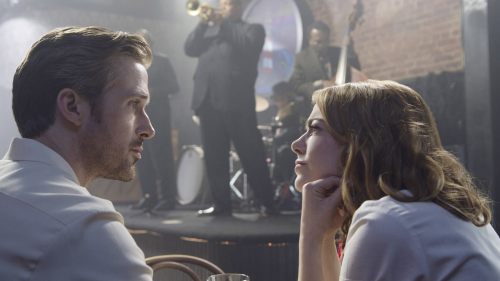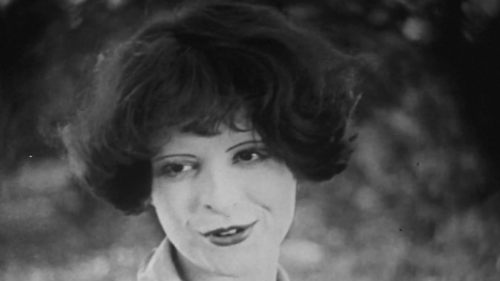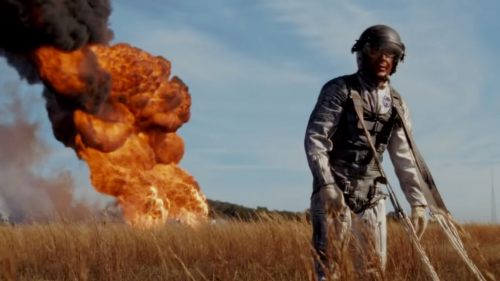Sunday Reads: FIRST MAN And Damien Chazelle’s Filmmaking Style
Fair Warning: This essay will contain spoilers for First Man and to a lesser extent Whiplash and La La Land!
First Man is a darn good movie. Ryan Gosling and Claire Foy’s interpretations of Neil Armstrong and Janet Shearon Armstrong are warm, thoughtful and nuanced. The supporting cast, which includes Corey Stoll, Jason Clarke, Patrick Fugit and Kyle Chandler all do worthy work. Justin Hurwitz’s score deploys the theremin to striking effect. In First Man’s spaceflight sequences, director Damien Chazelle has crafted some of 2018’s most thrilling set pieces. Once First Man arrives on the Moon itself, it becomes downright extraordinary. Gosling’s performance, more often than not silent, is as subtle and eloquent as his work in Blade Runner 2049’s pivotal bridge scene. Screenwriter Josh Singer, drawing from Armstrong biographer James R. Hansen’s research, makes an educated guess about Armstrong’s lone private moment on the Moon that leaves as much of a mark as First Man’s white-knuckle reenactment of the Eagle’s landing. Chazelle directs the sequence impeccably. And alongside cinematographer Linus Sandgren, he does some really neat storytelling not only with the images he puts on film, but with the type of film he uses to capture those images as well.
I’d like to use this essay to take a look at how First Man compares to the other two films of Chazelle’s I’ve seen – 2014’s Whiplash and 2016’s La La Land. A character as vastly different as Chazelle’s interpretation of Armstrong is from Miles Teller’s destructively obsessed drummer or the big-dreaming lovers played by Gosling and Emma Stone requires a different sort of storytelling than Chazelle used for his previous protagonists. Simultaneously, while Chazelle changes up parts of his filmmaking toolkit to explore Armstrong, there are others that he continues to use all the way to the Moon and back.
Setting aside the fact that Neil Armstrong was a real person and Andrew, Sebastian and Mia are fictional characters, the biggest difference between Chazelle’s approach in First Man compared to Whiplash and La La Land lies in how much information he and his characters provide to the audience. Armstrong is a private man, always a little on guard. His primary drive is to expand and reframe his personal perspective on existence, as an engineer and as a person. Whiplash’s Andrew (Teller), and La La Land’s Sebastian and Mia (Gosling and Stone) are all a great deal easier to read emotionally, and all want to be recognized for their work and passion in one way or another. Or, to put it more succinctly, Armstrong is a searcher. Andrew, Seb and Mia are strivers. Following Chazelle’s strivers, an audience viscerally experiences their emotional highs and lows alongside them. Following Chazelle’s searcher is another matter. The audience definitely shares in the extreme intensity of spaceflight (particularly during the critical systems failure aboard Gemini VIII), but Armstrong is a great deal less open emotionally. He’s not so opaque as to be enigmatic, but he does hold back a good deal from his loved ones, his coworkers and the audience. Whiplash probes the decay and collapse of Andrew’s soul. La La Land is clear-eyed about the ways love grows, changes, frays and endures. First Man, by contrast, is more external. It provides the social, political and personal context for who Armstrong is and why, with the moments where he either lets his guard down (with Janet and on the moon) or it breaks (after learning about the deaths of the first Apollo crew and his fight with Janet prior to Apollo 11) offering glimpses into why the new perspective he seeks is so vital to him. The difference extends to the way the three films’ climaxes play out. Whiplash and La La Land are bursts of motion and sound – one horrifying and violent, the other bittersweet and graceful. First Man, however, turns on a moment of stillness and silence.
While Chazelle’s storytelling style and focus in First Man differs from the ones he used in Whiplash and La La Land, there are some interesting commonalities. Critical moments of action can arrive very quickly– and they hit hard when they do. Andrew’s car accident and the Apollo 1 fire happen so suddenly that their endings become a punctuation mark with brass knuckles. La La Land’s opening number is a great deal more cheerful than either, but it works to similar effect. The stakes are raised. A point of no return has passed. Whatever happens next will be informed by the fallout from it.
The pictures also share a particular beat at their ending, a shared moment between two characters informed by everything that has come before. In Whiplash, Andrew sacrifices his soul to attain what he believes to be musical greatness, casting aside everything but at last upstaging and impressing his poisonous teacher Fletcher (J.K. Simmons). In La La Land, Mia and Sebastian, briefly reunited after going their separate ways years before, share a moment of happiness and recognition, affirming that while their love is no longer romantic, it is still very much alive. And in First Man, the Armstrongs share recognition. On the moon, with the world hanging overhead, Neil was able to at last memorialize the daughter he had so long privately grieved for. He and Janet have not resolved all of the issues they struggle with as a couple (in real life they would divorce in 1994), but for a moment, even with a quarantine wall between them, they’re together and they have something like peace.



